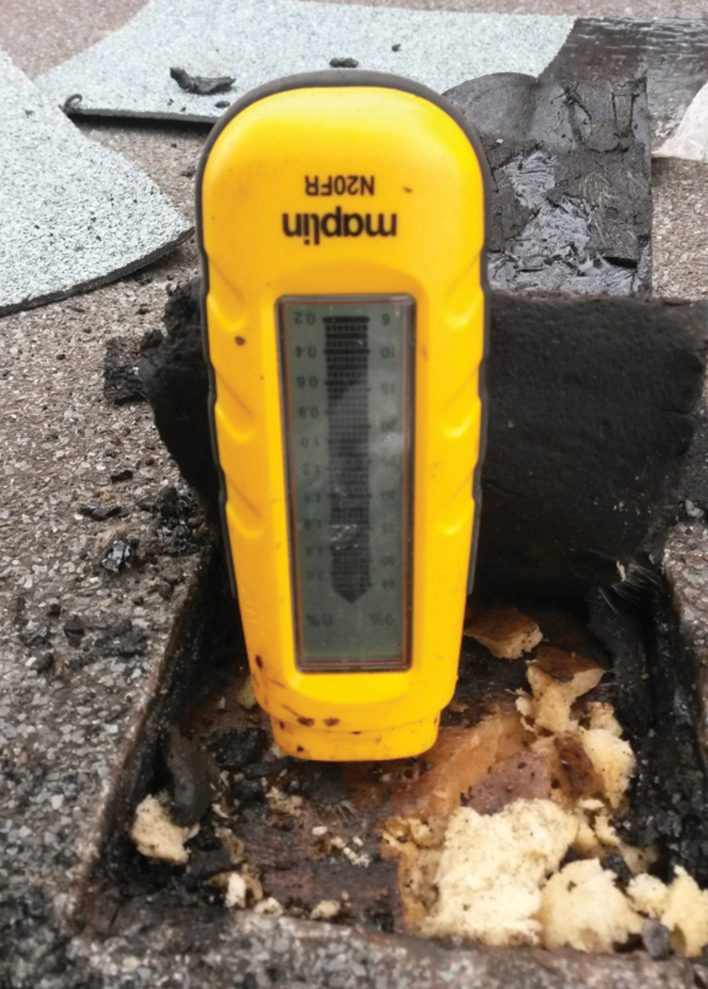
When you’re convinced you’ve got a roof leak and you can’t find the source, it’s worth thinking about Interstitial Condensation.
Spotting roofing problems early can save a fortune, however sometimes finding the source of a ‘leak’ can prove elusive. It’s likely in these cases that the leak is actually a case of Interstitial Condensation – an increasing problem particularly for schools with flat roofs built in the 1980s and early 1990s and for incorrectly refurbished schools.
‘Interstitial’ means occupying ‘interstices’ – small gaps or cracks. Interstitial Condensation occurs within the fabric or roof of a building, at the point (known as the dew point) where the atmospheric temperature of a given concentration of water vapour falls and water droplets begin to condense and dew forms. Different from surface condensation, it can be difficult to detect without investigation.
SCHOOL’S OUT
Take the case of a Glasgow school that had been ‘leaking’ for well over 16 years, where the leak could never be found. The 3000m2 flat roof had a metal composite panel deck, together with a pre-laminated underlay. Several overlays of new membrane had been applied over the years, each without success. Eventually, it was discovered there was no VCL (Vapour Control Layer) in the construction, and no butyl mastic seal to the laps. As the panels were factory bonded the designers may have argued there was no need for a VCL, however every lap and penetration through the deck should have been fully sealed with butyl mastic. If there is no control to water vapour travelling through the roof, then Interstitial Condensation is a risk.
In this case, there was no way for the water to get into the roof other than condensing out of the water vapour travelling up through it. The costs of misdiagnosis were running high. Every so often, the school had to replace 30-40m2 of ceiling tiles that were ruined by the leaks. A leaking gutter had been long suspected, and long lengths of gutter had been re-felted to no effect. In fact, a complete overlay of the roof with an additional membrane only increased the vapour resistance of the surface and made the problem worse.
So, in the event of persistent leaks, how can you detect Interstitial Condensation? Firstly, it’s important to call in a merchant who’ll provide you with specialist support – such as SIG Roofing. By cutting a hole in the roof, the build-up and condition of the layers of roof can be checked. If there is no Vapour Control Layer (VCL), there is a very good chance that Interstitial Condensation may be the cause. If the roof was constructed in the 1980s and early 1990s, it’s likely that the composite sheets were not fully sealed and warm air may be travelling up inside the construction and condensing where it hits the dew point. If there is a ceiling void, especially with a cold roof, it must be ventilated. Without ventilation, warm moist air will condense onto a timber deck and rot the roof from the inside.
Remember also that current regulations in PART L 2B state that if more than 25% of the existing waterproofing is being stripped, the whole roof must be brought up to the standard of the current energy related regulations. Practically, this means that if only 25% of the roof is stripped, the whole roof may still need to be upgraded to meet PART L 2B. Meaning that in the areas of the roof that are not stripped, the roof must be guarded against Interstitial Condensation by building up between the new and old insulation areas.
Interstitial Condensation can be costly and the last thing that any school wants is to have to line up buckets to catch leaks in the ceiling. So, if roof leaks are persistent it pays to seek professional independent advice from specialists who can help diagnose any issues with the roof and also help secure funding from the EFA (Education Funding Agency) to fix the issue.


